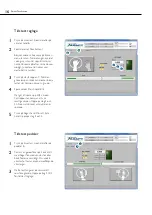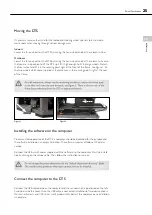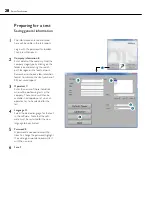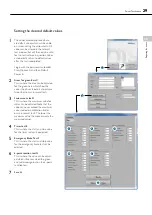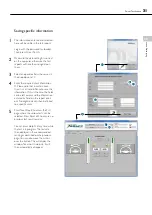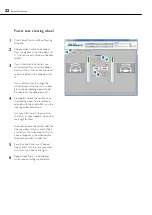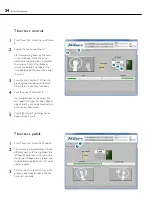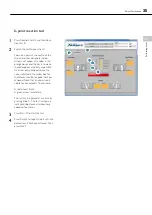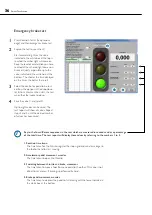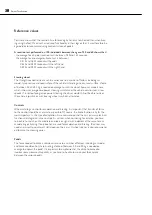
30
Driver Test Station
30
Performing a test
Creating the right conditions
To be able to perform to their best, your client needs to feel fresh and alert. Imple-
ment the tests therefore when conditions are right for them to perform to their best.
Remember that factors like meals, sleep and medicines can affect the test result both
negatively and positively. Some diagnoses will also entail a reduction in stamina or a
gradual deterioration in physical capacity over the course of the day. The time taken
to perform the tests and at what point during the day these may be implemented can
therefore be crucial for the result. For later reference, do not forget to document
when the test was performed.
All tests are designed to motivate your client to achieve a good result, but a value can
always be reset if your client is not happy with their performance. Just bear in mind
that your client may tire and will therefore perform worse if the same test is repeated
many times over. Implement the tests in the order presented in this manual and start
with the power test when your client’s physical capacity is at its best. Make sure your
client feels secure and is in agreement with how the tests will proceed before starting
them. Make sure too that they are performed in a calm environment. Uncertainty
about the tests or anything that proves a distraction can be stressful and may result in
misleading results.
The tests can be performed from a 6-way base already in position or your client’s own
wheelchair. In both cases it is important that the set-up of driver to steering wheel,
pedals and controls should be configured as optimally as possible. Adjust the height of
the steering wheel and the distance to the pedals and connect up the accelerator ped-
al on the left as well as a suitable wheel spinner, as required. If the 6-way base is used,
vertical adjustment of the seat is also possible. Where the tests are performed from a
wheelchair, it must be anchored to the floor with the anchor brackets to prevent any
risk of it tipping over.
By studying your client while the test is in progress, you will be able to obtain more in-
formation than simply the values which will later be recorded in the test report. Note,
for instance, your client’s movement in their arms and legs, as well as their ability to
grip with their hands and coordinate movements. Also test your client’s ability to man-
age the controls for the windscreen washer, wipers and indicators. Last but not least,
study how your client takes onboard instructions and handles stress. This observation
is of the utmost importance if a fair assessment is to be made of your client’s overall
capacity. The test results will give a clear picture of the type of adaptation needed for
your client to be able to drive a vehicle safely.
It is important to bear in mind that the DTS only tests the physical capabilities of your
client and does not provide any information as to whether they have the mental qual-
ities required of a driver. Nor can the DTS ever act as a substitute for a test in a real
driving situation. Even if the DTS indicates that your client meets the physical require-
ments, we always recommend they practise driving with an expert driving instructor
to ensure they are suitable to drive.
Summary of Contents for Driver Test Station
Page 2: ......
Page 3: ...SV EN DE FR ES IT...
Page 4: ...4 Driver Test Station...
Page 21: ...21 Driver Test Station SV Analysera resultat...
Page 22: ...22 Driver Test Station...
Page 39: ...39 Driver Test Station EN 39 EN Analysing the results...
Page 40: ...40 Driver Test Station...
Page 57: ...57 Driver Test Station DE 57 DE Analyse des Ergebnisses...
Page 58: ...58 Driver Test Station...
Page 75: ...75 Driver Test Station FR 75 FR Analyse des r sultats...
Page 76: ...76 Driver Test Station...
Page 93: ...93 Driver Test Station ES 93 ES Analizar los resultados...
Page 94: ...94 Driver Test Station...
Page 111: ...111 Driver Test Station IT 111 IT Analisi del risultato...
Page 112: ......
Page 113: ......

